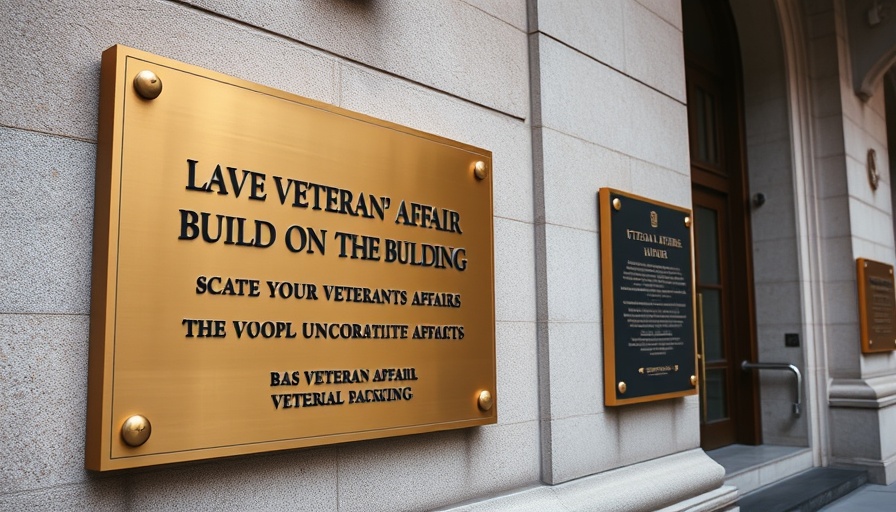
Exploring the AI Endeavor at the VA: A Shift Towards a Digital Future
As the Department of Veterans Affairs (VA) embraces new digital tools, a notable figure from Elon Musk's Department of Government Efficiency (DOGE) has stirred controversy by attempting to integrate artificial intelligence into the agency's workflow. Sahil Lavingia, serving as an adviser to the VA's chief of staff, has elicited mixed responses from the workforce, raising concerns about the sudden influx of inexperienced tech operatives attempting to implement sweeping changes.
Understanding the Role of Artificial Intelligence in Government
At the heart of this shift lies AI technology's potential to streamline operations and improve service delivery. However, caution appears paramount when integrating such innovations into established governmental systems. The VA, tasked with administering benefits to millions of veterans, faces the colossal challenge of maintaining efficiency without compromising security or the quality of care.
The Implications of AI Tools Like OpenHands
The choice of OpenHands, an AI tool purportedly pushed by Lavingia, has raised eyebrows among seasoned VA employees. While AI can potentially catalyze significant efficiency improvements, the question remains: Can it replace the nuanced understanding of human needs vital for serving veterans? Moreover, Lavingia's quick pivot to significant access within VA systems, described as having a 'zero account,' should inspire caution around how AI tools are being integrated.
Concerns About Experience and Expertise
The lack of government experience among DOGE operatives like Lavingia and Volpert has also alarmed long-standing VA staff. With backgrounds primarily in startups rather than federal oversight, they face an uphill battle in navigating the bureaucracy and complexities required to serve a population as diverse as that of veterans. The traditional modalities of obtaining information and operating in governmental contexts differ vastly from the agility needed in tech startups.
Comparing Historical Trends in Government Technology Integration
There’s a historical precedent for such scenarios: significant tech integrations similarly prompted upheaval in other governmental sectors. Factors contributing to failure include inadequate user training, lack of ongoing support, and a failure to understand constituents' unique needs. The VA must consider these lessons as it forges ahead, ensuring that technology serves to enhance rather than complicate service delivery.
Future Predictions: Navigating a Tech-Driven Landscape
With AI increasingly becoming a core part of operational frameworks in governmental organizations, the future holds promising opportunities as well as challenges. Predicting a tech-driven government landscape may lead to increased efficiency and a modernized public service. However, vigilance is critical—governments must prioritize transparency and performance metrics to ensure that these integrations yield beneficial outcomes without alienating those they serve.
Conclusion: The Value of a Cautious Approach
In conclusion, while leveraging AI at the VA holds potential for improved processes and outcomes, it is essential to do so with conscientiousness and strategic foresight. Balancing innovative pursuits with the inherent challenges of bureaucracy, culture, and the complexities of veteran care will define the success or failure of this initiative.
Marketing Managers, stay engaged with the evolving landscape of AI within governmental frameworks. It’s crucial to navigate these transformations mindfully, integrating cutting-edge tools while addressing the ethical implications of such changes.
 Add Row
Add Row  Add
Add 




 Add Row
Add Row  Add
Add 

Write A Comment